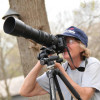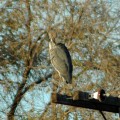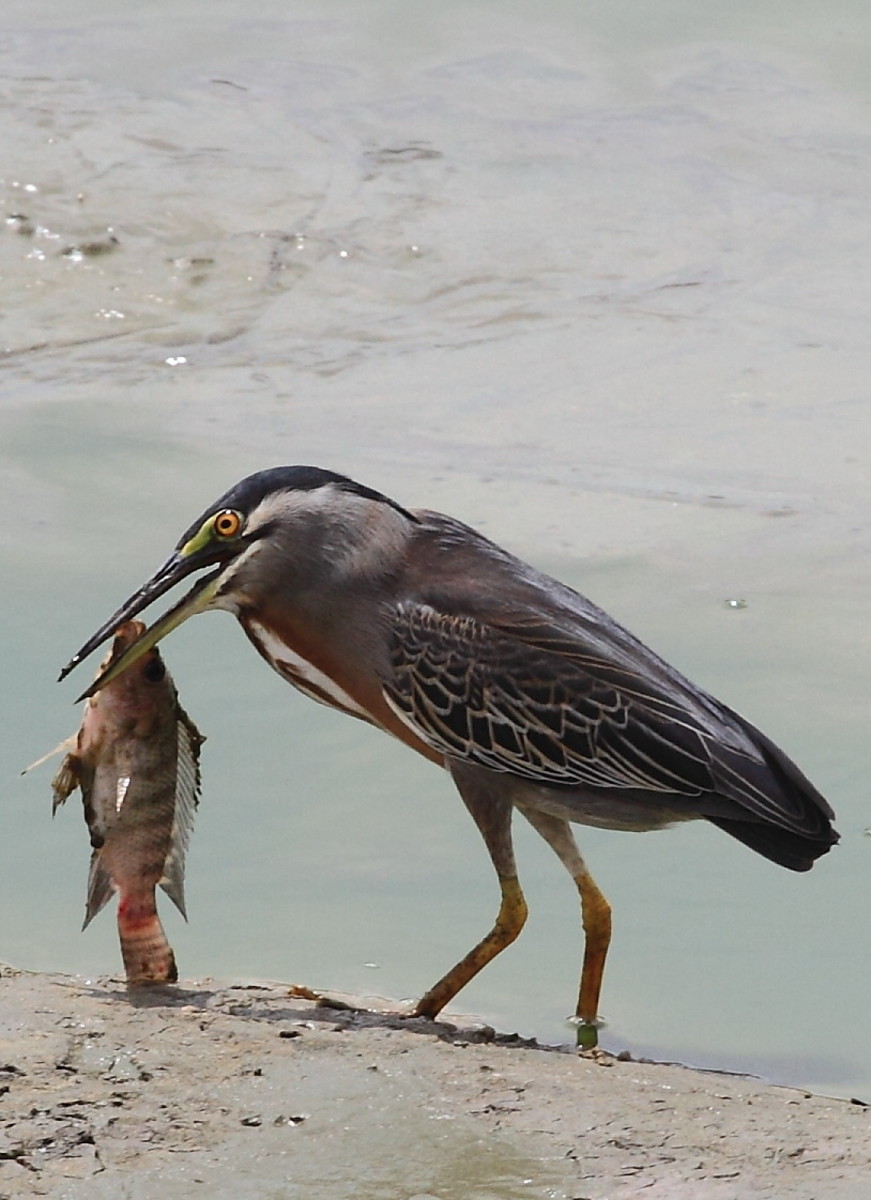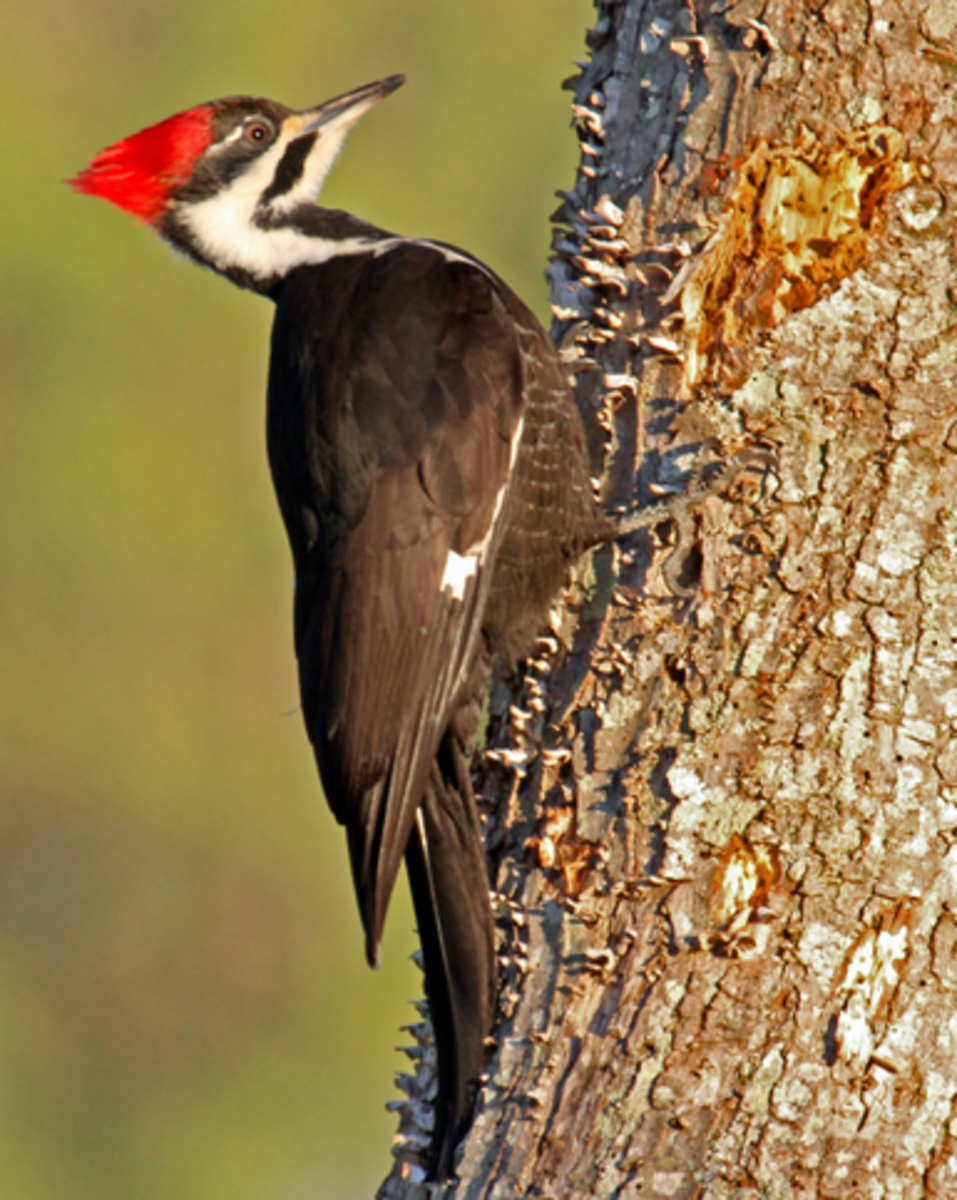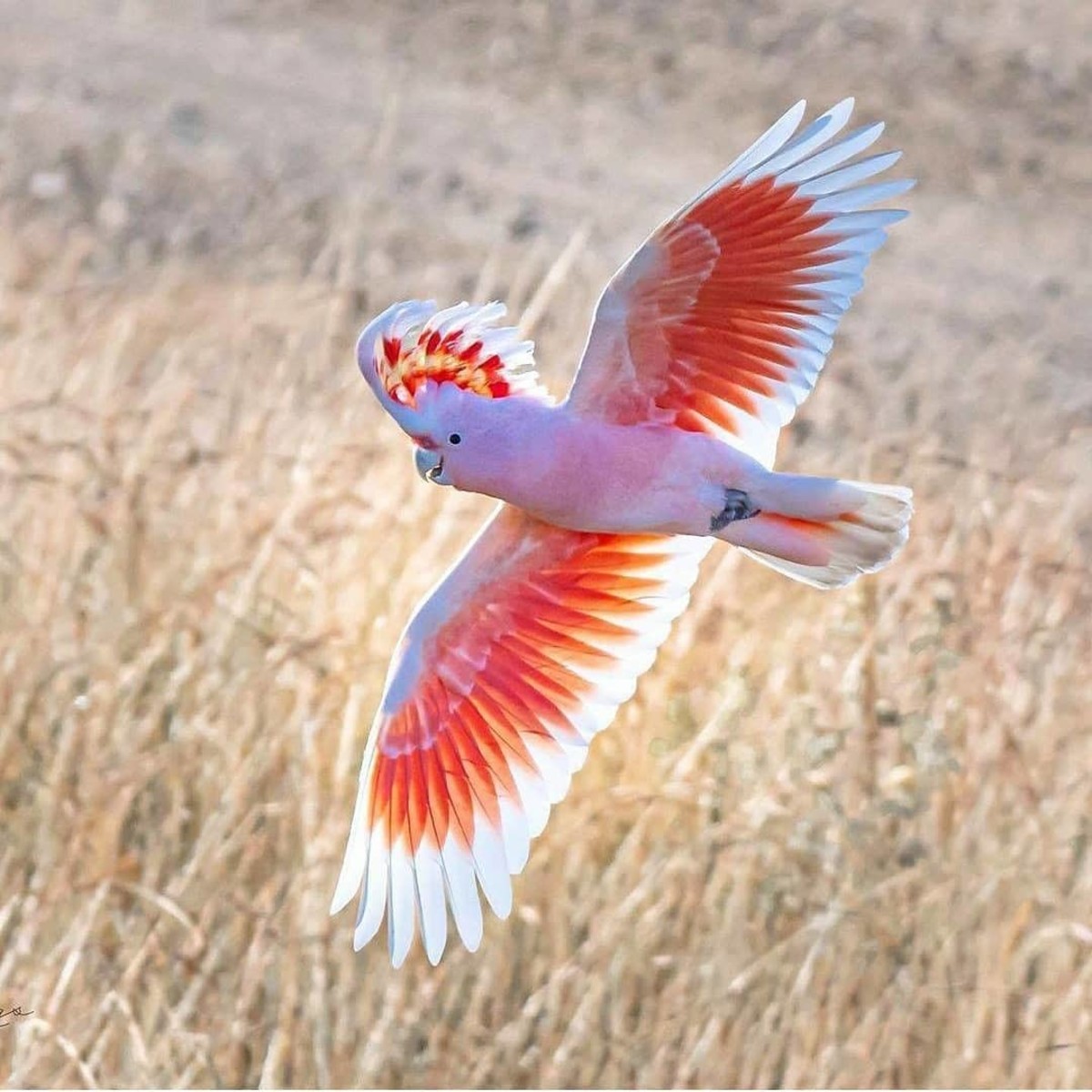Great Blue Heron: The Silent Sentinel
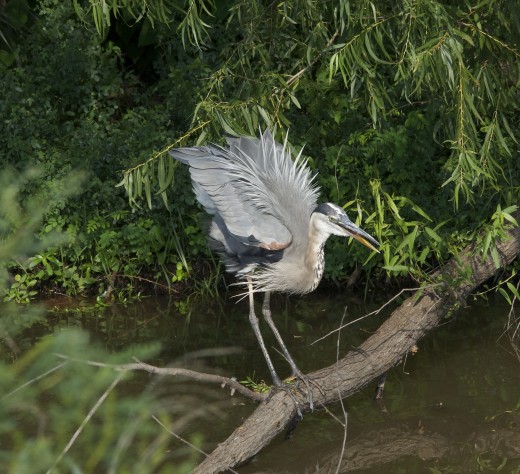
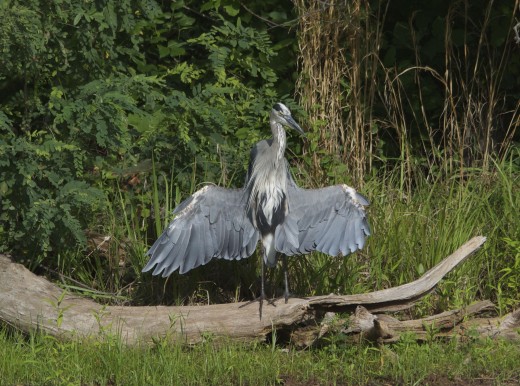
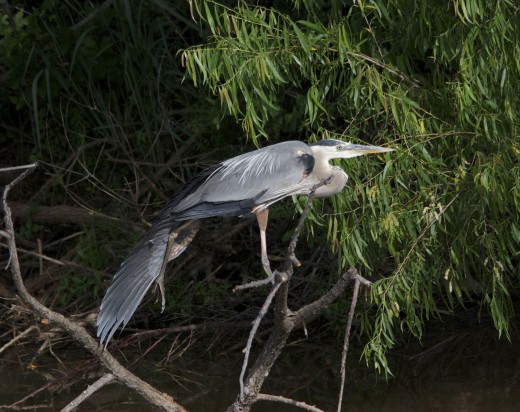
Great Blue Heron and Subspecies
The Great Blue Heron is often called a crane or a blue crane by locals and is the largest and most common heron on the North American continent. One can readily distinguish it by its long yellow bill, mostly blue-gray body, and its size. During breeding season, several black long plumes adorn the back of the crown. There is also a white morph found in southern Florida that is known as the Great White Heron. Another paler form of Great Blue Heron, also in south Florida that was formerly considered a separate species is called Ward’s or Wurdemann’s Heron.
These birds tend to nest in trees, build their nests with sticks, and line them with twigs and leaves in trees usually 20-60 feet above ground or water. They will occasionally nest in low shrubs, but rarely on the ground. The female will build the nest from materials collected by the male. The birds from the north will migrate to the south. Male and female are similar in plumage, and the only ones that can tell them apart are in their world. It has recently been learned that birds see differently than we do. They have UV(ultraviolet vision), which makes them readily see the differences between the sexes. Male great blues are larger than females and they are also more aggressive. Both share the responsibility of feeding the youngsters. I have seen rookeries in trees of both great blues and Great Egrets. Herons only stay together during nesting season, and the rest of the year the remain solitary individuals. It is the life of the heron.
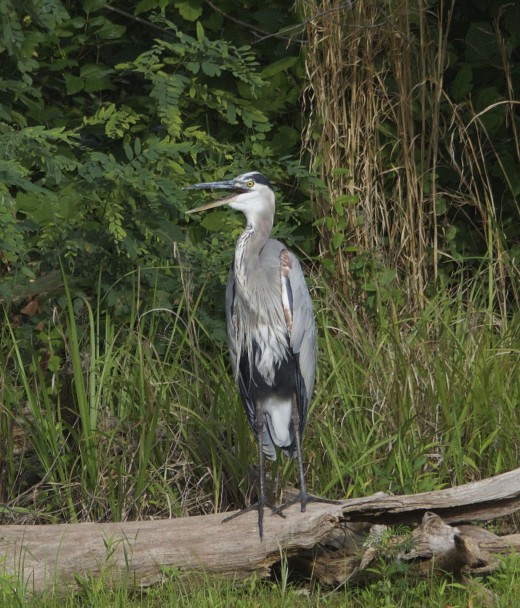
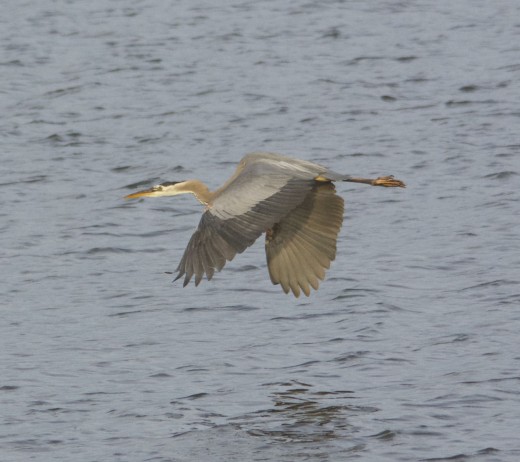
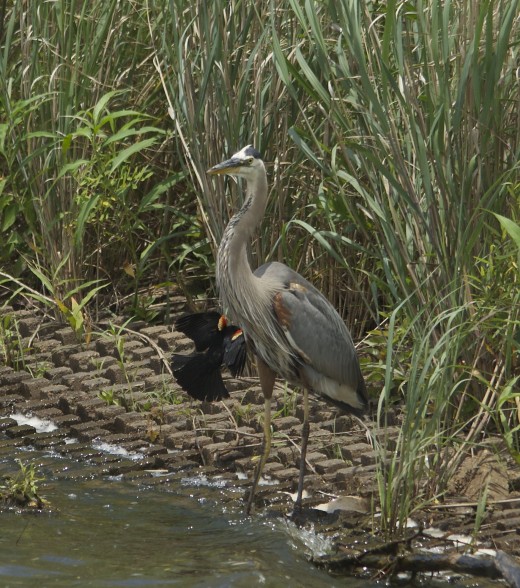
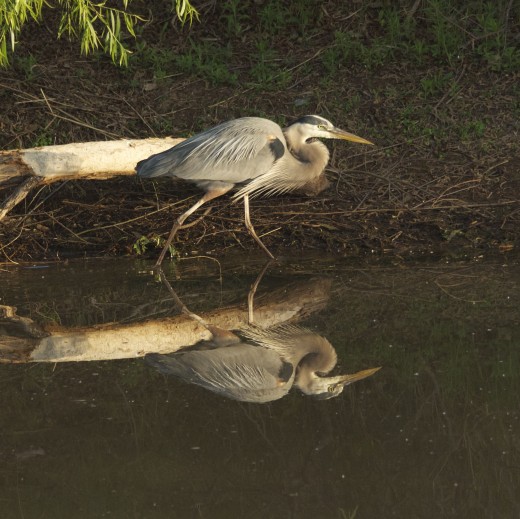
Common Ailments
The reason why I respect them so much, is that they spend so much time in the water hunting for food, namely fish. Also, I must give them their due, as the ones that frequent Boomer Lake in Stillwater, OK, must put up with me trying to get photos of them. These birds tend to be affected with parasites(worms), due to the food that they eat, and they are also prone to foot problems, like bumble foot. This is a staph infection due to small wounds on the bottom of the feet. They also tend to have eye injuries due to fishhooks from fishermen, as well as get hooks in other parts of their bodies. The ones that I spend time near, tend to avoid people as much as possible, but this will happen in other areas of the country where these birds are used to being fed by the well-meaning populace.
You will see few birds that are not herons or egrets that are so graceful and beautiful in flight. Every time I witness one of them on the wing, my heart is filled with joy, as their beauty is unsurpassed.
How to Hold the Great Blue Heron if It Requires Medical Attention
A wonderful bird that I have a great deal of respect for is the Great Blue Heron. The first time that I personally came in contact with one was when I was doing volunteer work for Tri-State Bird Rescue. I had been instructed that this bird must be properly held, or it could cut its own jugular out of fear, by trying to escape from me by flailing its legs about. In doing so, the nails on the feet could easily tear the throat. Also, those long beaks are used not only for fishing, but could easily poke out an eye. (Remember Ralph from “A Christmas Story?” You’ll poke your eye out!”) Sorry, forgive my poor humor.
I was surprised to learn that this tall bird only weighs about 5 pounds. To safely hold the Great Blue Heron, if you should ever find one that requires medical attention, is to first cover its head with a towel. What birds cannot see, cannot hurt them. One hand will tuck the wings to your side like a football, which is known as “The Tri-State Hold,” and tuck the legs under the bird. Your objective is to hold the feet and keep the legs tucked under the bird. The other hand will hold the bill, but do not cover the nares, which is where the bird breathes, and those are located at the thickest part of the bill. I used to hold the bill at the midway point.
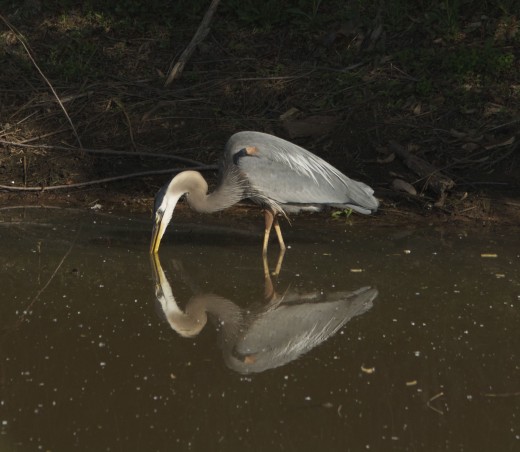
The Silent Sentinel
No, I shall not get away without telling you why I call this bird the silent sentinel. It really is silent and can stand in place for hours waiting for a meal to come by. These water birds always wait for their meals to come to them, once they settle somewhere. They prefer quiet, less traveled areas, but there are certain birds that will drive them away, like the Red-winged Blackbird. Red-wings settle along the shoreline, and many a heron has passed by their nest, not necessarily innocently, for they will eat fledglings, if given the chance.
Where to Find the Great Blue Heron
Observe the above link, and you'll discover where the Great Blue Heron is most prevalent. This beautiful and majestic bird has disappeared from certain areas of the country, which has a lot to do with global warming. If its food heads north for colder waters, it will do the same. Maine has lost a number of these birds, which are very rare in the state now, save for the coastal areas, where it can be certain to locate plenty of food for that discriminating palate.
It was believed that at one time, the predator effect, such as Bald Eagles were taking a toll on this bird, but in looking at other parts of the country with eagles living and fishing in close proximity, that is not the case.
How to Tell the Age of the Bird
The more spotted the neck and breast, the younger the bird is, like a first year bird. A subadult will have more tan on it, so note the shoulder epaulets, and an adult bird has black at the shoulders.
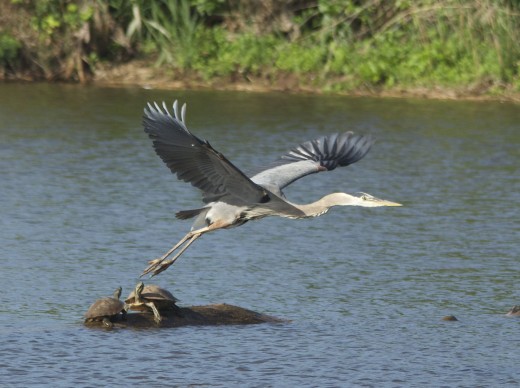
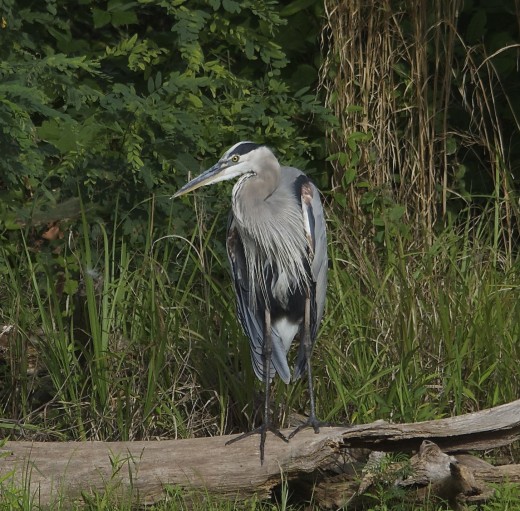
Interesting Facts
The oldest Great Blue Heron, based on banding recovery, was 24 years old.
Thanks to specially shaped neck vertebrae, Great Blue Herons can curl their neck into an S shape for a more aerodynamic flight profile and to quickly strike prey at a distance.
Great Blue Herons can hunt day and night thanks to a high percentage of rod-type photoreceptors in their eyes that improve their night vision.
Along the Pacific coast, it’s not unusual to see a Great Blue Heron poised atop a floating bed of kelp waiting for a meal to swim by.
Furthermore, if fish are not available, the heron or egret will eat mice or rats. As long as they can get it down their throats, it is fair game.
This is about all that I am able to tell you on this wonderful heron, other than if you see it flying in the distance, its legs will be found trailing behind. Egrets also fly in the same way. There is nothing more beautiful than to see this bird winging its way across a full moon...
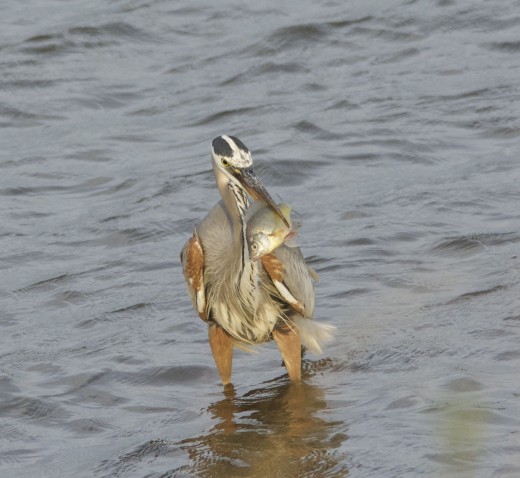
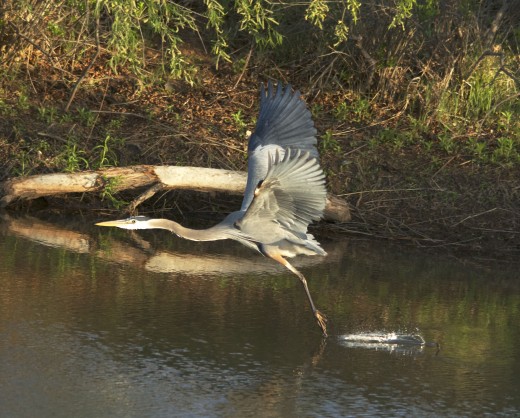
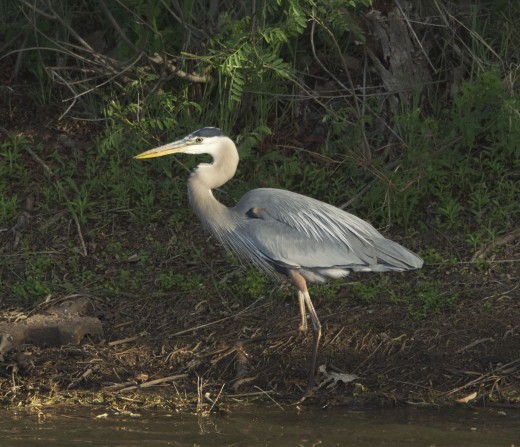
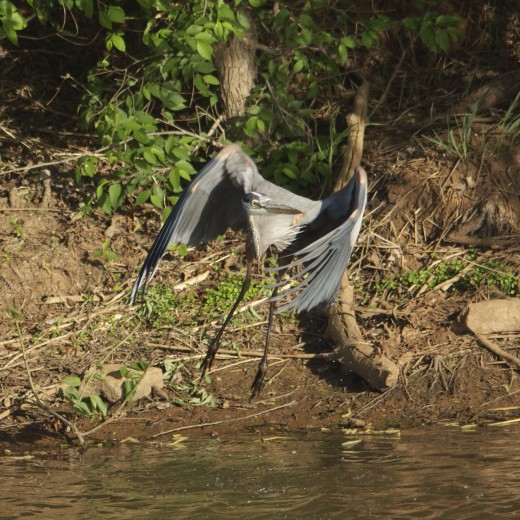
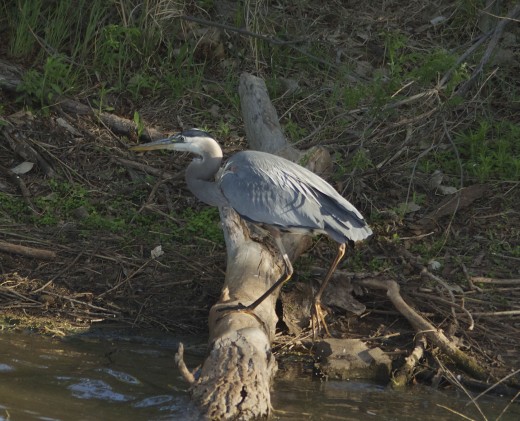
© 2012 Deb Hirt
